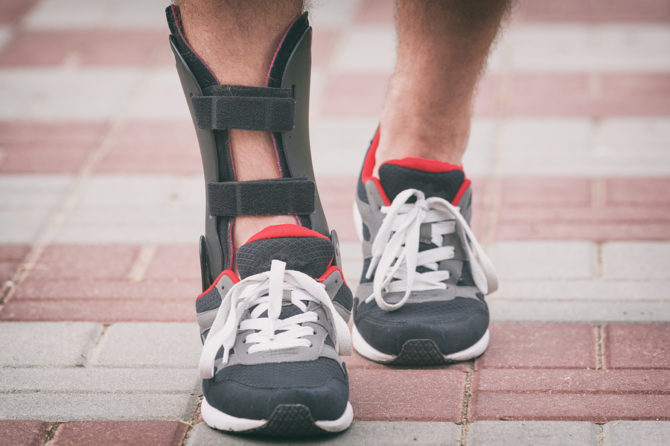
Brace Yourself…
An ankle sprain happens when the ligaments, soft bands of tissue connecting bones, are hyperextended and the ankle bone shifts laterally (to the side). There are varying degrees of severity for sprains and a wide variety of treatments. One of the most commonly recommended treatments is for patients to wear an ankle brace. This could be temporary as the ankle heals or it could be recommended for extended wear during exercise and sports.
A first-degree sprain is generally mild and only requires RICE and a lightweight brace. For these injuries, a compression sleeve or elastic slip-on sleeve may be adequate to hold the ankle stable. If you experience frequent sprains or a more severe sprain, a mid-weight duty brace is encouraged.
Second-degree sprains are considered a moderate injury. The best brace for a second-degree sprain is one that Velcro’s or laces up the ankle. These braces should be adjustable in multiple places to avoid putting pressure on swollen areas while still keeping the ankle stable.
Third-degree sprains are the most serious and require full ankle support or even a surgical solution. Where casts were common in the past, braces have now taken over as the treatment of choice. An Aircast or similar brace will extend past the ankle to mid-calf, protecting the joint while still allowing for weight bearing and movement. Stirrup braces may also be used as they have rigid sides that Velcro around the ankle to hold it in place.

Man with an ankke brace over white background
Some people may prefer to wear a brace during sports or while exercising as a preventative measure. This is also a good idea for people who experience chronic ankle sprains and are at higher risk for reinjury. Medium support braces, such as those used for second-degree sprains, are best for any activity involving lots of side-to-side (lateral) movements. Medium and light support braces should be worn daily during rehabilitation.
Your podiatrist will help you choose the right brace for your unique needs. Any brace should be breathable and waterproof or sweat-resistant. You may also need to purchase a larger pair of shoes to accommodate the size of the ankle brace. Call the FAAWC today to discuss your options.
